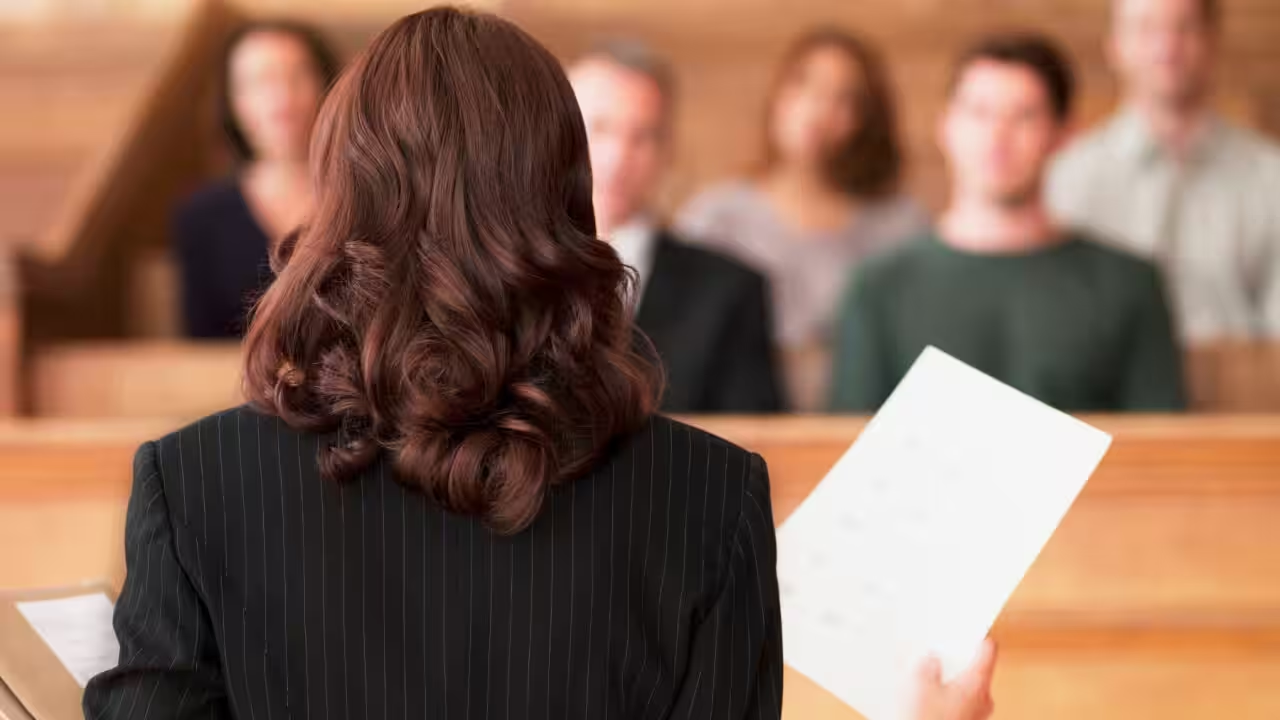Every day, accused people stand trial in front of a jury of their peers, who are charged with delivering a verdict on their guilt. It is a nerve-wracking time for an accused person and, in all likelihood, they have never gone through the process before.
Listed below are a few facts about going to trial that you probably don’t know.
Going to Trial Fact 1: Every accused person has the right to challenge three jurors
In Victoria, every accused person has the right to challenge three jurors without providing a reason. Usually, when a jury is being selected, the jury pool will be brought into Court. These are all the people who have been selected for jury duty. They will come into Court, whilst the accused sits in the dock. The judge will then provide the jury pool with an overview of what the case is about and read out the names of all the witnesses, court staff and lawyers. This is to ensure that they do not know any of the individuals involved in the case.
They are also given a number. You never know their name. Their number is called out and they advise the Court, in turn, of their profession. They then indicate to the judge whether they will seek to be excused from jury duty. Those who seek to be excused are provided with a sheet of paper where they write down the reason why. It could be that they have young children to care for or a holiday planned. However, the judge will not excuse a juror from serving on the jury because they have to go to work. Employers are required to allow their employees leave in order to serve on a jury. The judge will then read the reasons and indicate whether the juror is excused.
Those remaining on the jury are then called individually. The judge’s associate does this by pulling out a wooden box, which contains every number of the jury. As the number is called, the juror has to walk up and past the accused and then to the jury box. The accused then has three challenges which they can use to stop a juror sitting on their jury.
These are called peremptory challenges. They are important because it means that an accused person can challenge a potential juror who has a particular profession which makes them unsuitable for jury duty or, even, to challenge a juror who looks at the accused in a funny way. Often, the accused’s solicitor will stand in the dock with the accused and advise them on whom to challenge if anyone. They can challenge at any time prior to the juror taking their seat in the jury box. The accused can also challenge ‘for cause’. For example, they may realise that they know the juror. Once the jury box is full, the jury will have been selected.
Going to Trial Fact 2: There are a number of people with official roles to play in the Court
The Court is staffed by a number of people, all of whom have official roles to play. First, there is the judge. He or she directs the jury on the law and arbitrates the trial to ensure that it is going fairly. They also decide pre-trial matters, which need to be argued before the trial formally commences. If the accused is convicted, they will deliver the sentence. Secondly, there is the judge’s associate. A judge’s associate is like an assistant to the judge. Often they have law degrees and assist the judge with administrative tasks, as well as doing legal research. They also liaise with the parties and ensure the efficient running of the trial. Thirdly, there is a Tipstaff. The Tipstaff operates the Court itself, escorts the jury in and out of the jury room and runs the technology required, as well as ensuring that there is enough water and tissues for the room.
At the bar table are the lawyers. The lawyers in robes are barristers. They are lawyers specially trained to be advocates. They appear in the trial instructed by their solicitors. Solicitors are also lawyers and operate in a broader practice. Many do appearance work in Court, but also provide legal advice, prepare documents, file documents and keep in contact with the client. Whilst the barristers sit at the bar table facing the judge, solicitors sit with their back to the judge on the other side of the bar table. Sometimes, there will be more than one lawyer on either side of the bar table.
At the back of the Court, in the dock, will be security. This is regardless of whether the accused is remanded in custody at the time of their trial or free on bail in the community. The security is present mainly to protect the accused. Trials can be emotional experiences and there have been times where family members of victims, or the victims themselves, have approached the accused in the dock. Security ensures that the Trial runs smoothly and that there are no incidents.
Going to Trial Fact 3: Jurors are not allowed to know that the accused is remanded in custody
Significantly, jurors are not allowed to be told (or learn) that the accused is remanded in custody during their trial. The reason for this is that they might infer that the accused is guilty, dangerous or a bad person by virtue of the fact that they are being held on remand. For this reason, the accused is brought into the court before the jury and any handcuffs removed. If the jury accidentally learn that the accused is in custody, the trial will miscarry, the jury discharged and then a new jury selected for a new trial.
Going to Trial Fact 4: The informant is permitted to be in the Court while all of the evidence is called
The Informant is the Police officer leading the investigation. They inform the Prosecution of the evidence. Unlike all other witnesses, the Informant is permitted to be in Court whilst all of the evidence is called. They are called at the end of the trial, where they give evidence and are cross-examined. They also play the record of interview with the accused, if the accused has participated in one. They also liaise with witnesses to ensure that they attend Court at the right time, collate exhibits to be tendered and will make enquiries if required to do so should an issue arise.
Going to Trial Fact 5: The judge can answer questions from the Jury after liaising with both the prosecution and the defence
After the closing addresses, the judge will ‘charge’ the jury. Sometimes, they will summarise the prosecution and defence cases. In all cases, he or she will explain the law to the jury, both in terms of the burden of proof and the law that applies specifically to the case. After the charge, they will swear the jury in with promises or oaths to discharge their obligations as jurors faithfully. Once the jury is sent out, they go to consider their verdict. They will have before them all of the evidence that was tendered in the trial and any notes that they have taken. They may also have a trial transcript to read back over the evidence. If something is unclear or is weighing on a juror’s mind, the foreperson can send the judge a note with a question. Once a question is received, the judge convenes the Court and advises the Prosecution and Defence what the note says and asks for input in relation to how to answer it, if required. There is then discussion about the appropriate response and, once decided, the jury are brought back into Court, placed in the jury box and the judge answers the question for them. They are then sent back to the jury room.
Going to Trial Fact 6: No one is allowed to ask a juror why they reached the verdict they did nor what happened in the jury room
Once all jurors have reached a unanimous verdict, or a majority verdict if such a direction has been given, they advise the Tipstaff that they have a verdict. The Tipstaff then calls the parties and tells them to come back in to Court for the verdict. Once the Court is convened, the judge will ask the foreperson whether they have reached a verdict. The foreperson will advise that they have. The judge’s associate will then read out each charge on the indictment and the jury will indicate whether they have found the accused guilty or not guilty with respect to each of the charges. The jury will then be thanked and discharged.
Verdicts are extremely nerve wracking and, sometimes, it is unclear how the jury reached the verdict. It is simply up to the twelve people in that room. After hearing all of the evidence and all of the arguments, jurors make one of the most important decisions in an accused person’s life. Significantly, no one is allowed to ask a juror why they reached the verdict they did nor what happened in the jury room. It is entirely veiled in silence.
Contact Galbally Parker Criminal Defence Lawyers
Navigating the complexities of a trial can be daunting, and many people are unaware of the intricacies involved. From the unpredictable nature of jury decisions to the potential for lengthy timelines and significant expenses, going to trial is often more challenging than it may initially appear. Understanding the realities of the trial process—including the emotional toll, the critical role of evidence, and the importance of expert testimony—can help you better prepare and make informed decisions about your legal strategy.
If you or a loved one is facing the prospect of a trial, don’t hesitate to get ion touch with Galbally Parker lawyers. We are a team of defence lawyers based in Melbourne, with experience across a wide range of areas of the law including family violence, white collar crime, WorkSafe matters, common assault and fraud. Contact us today.


